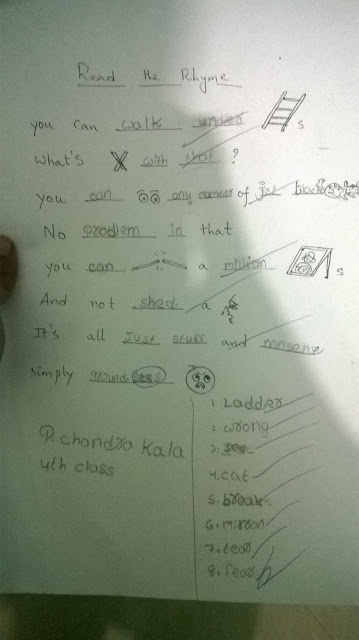The Art of Transaction - A Step-by-Step Guide to Transact Poems
Creativity is essential in teaching rhymes, especially at the primary school level. Creative teaching methods, such as using music, art, and movement, can make learning rhymes more engaging for young students.
Transacting a poem for primary classes can be a creative and engaging way to teach poetry. Here's a step-by-step guide on how to do it.
Transacting a poem for primary classes can be a creative and engaging way to teach poetry. Here's a step-by-step guide on how to do it.
1. Select a Poem:
- Choose a poem that is suitable for the age group of your primary class. Consider themes and topics that are relatable and interesting to young students.
2. Preparation:
- Read the poem thoroughly to understand its meaning and any literary devices used.
- Identify key vocabulary words or phrases that might be challenging for your students.
3. Introduction:
- Start with an engaging introduction. You can use a short story, a picture, or a simple question to capture students' attention and introduce the theme of the poem.
4. Vocabulary Building:
- Introduce and explain any challenging words or phrases. You can use visual aids or gestures to make it more interactive.
- RAIN ON THE GREEN GRASS RHYME
- Read the poem aloud to the students.
- Use expressive voice and gestures to convey the emotions and meaning of the poem.
6. Discussion:
- Engage students in a discussion about the poem. Ask open-ended questions to encourage critical thinking.
- Discuss the theme, characters, or any moral lessons the poem conveys.
7. Interactive Activities:
- Create interactive activities related to the poem. For example:
- Act it Out: Have students act out scenes or characters from the poem.
- Illustrate: Ask students to draw pictures related to the poem.
- Create Their Own Poem: Encourage students to write their own poems on a similar theme.
- Poetry Analysis: Break down the poem into its elements, like rhyming words, metaphors, or similes.
- Let students express their thoughts and feelings about the poem. This could be through artwork, discussions, or even short essays.
- KIND WORDS POEM
- Have students recite the poem individually or in groups. This improves their memory and presentation skills.
- Assign homework related to the poem, such as writing a short summary or discussing it with their families.
- Evaluate their understanding through quizzes or written assignments.
11. Follow-Up:
- Connect the poem to other subjects. For example, if it's about nature, tie it into a science lesson.
- Encourage students to find more poems on similar themes and share them with the class.
- Assess students' understanding of the poem and its themes through quizzes or class discussions.
Remember to make the experience fun and interactive, keeping in mind the age and comprehension levels of your primary class students. This approach will not only teach them poetry but also enhance their creativity and critical thinking skills.
Here is an interesting lesson plan, you may read.











Comments